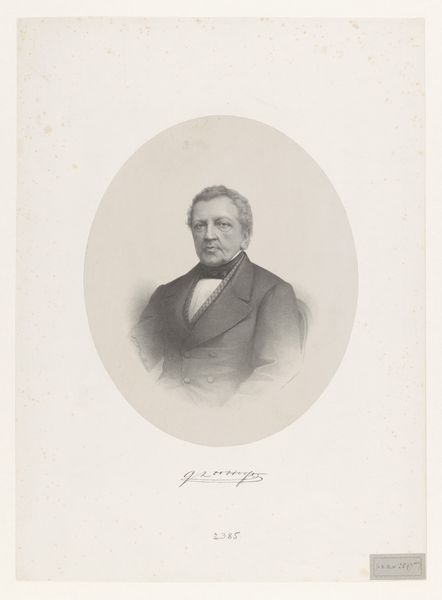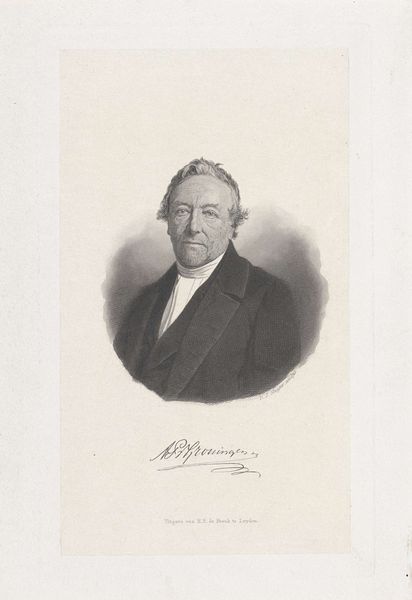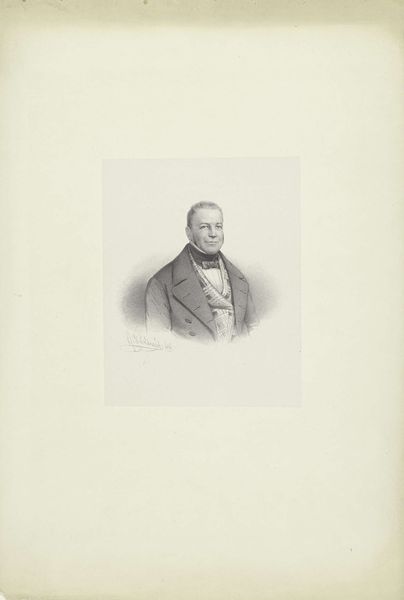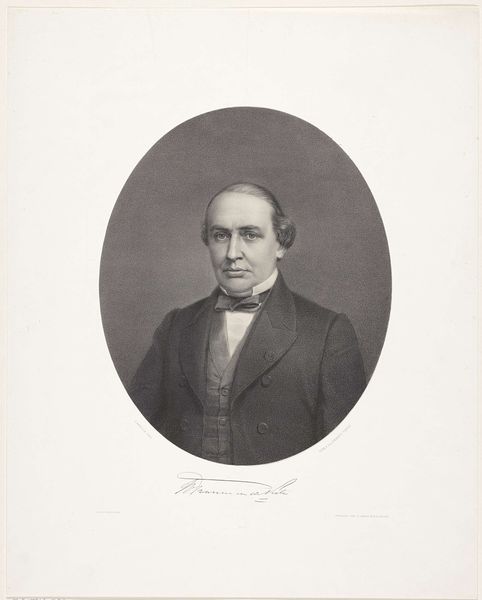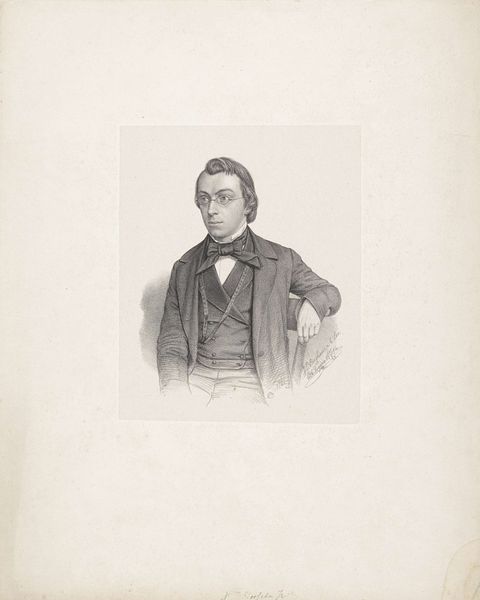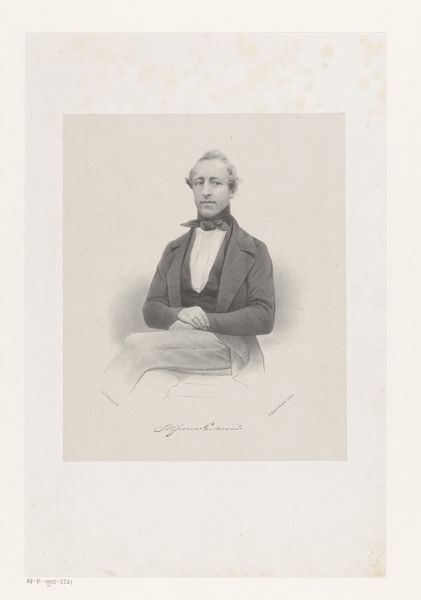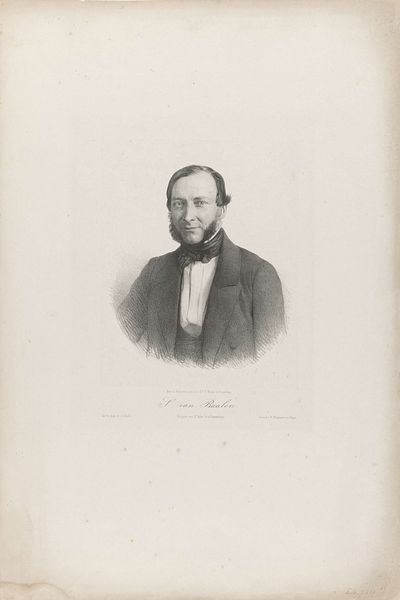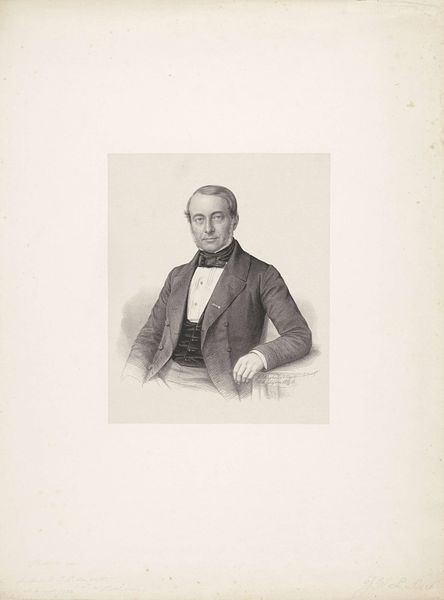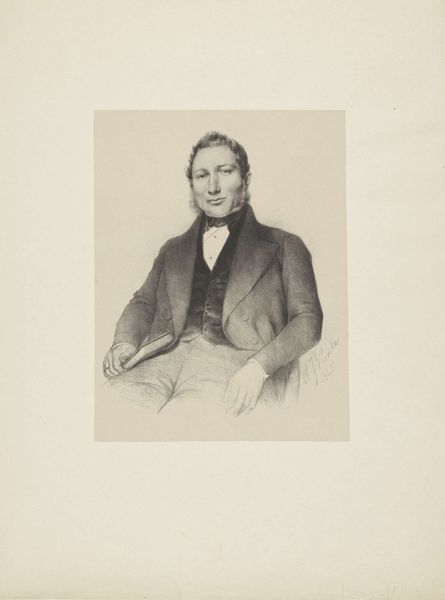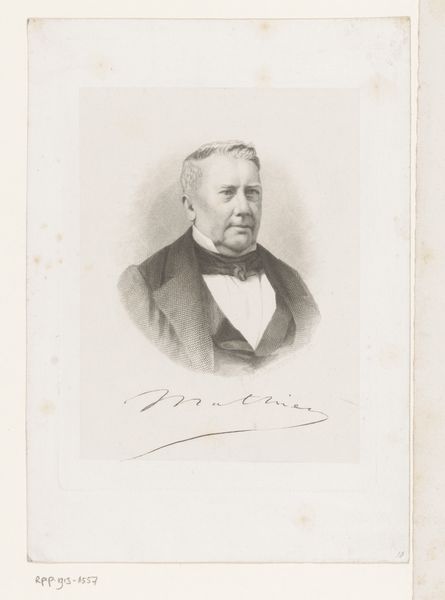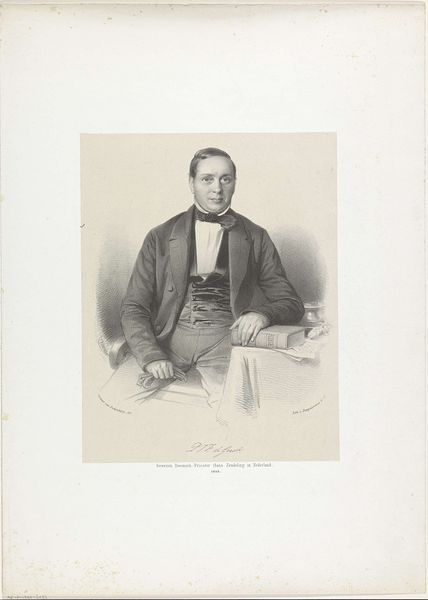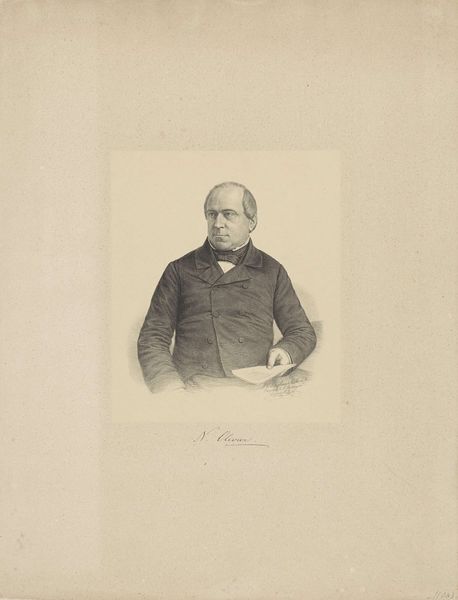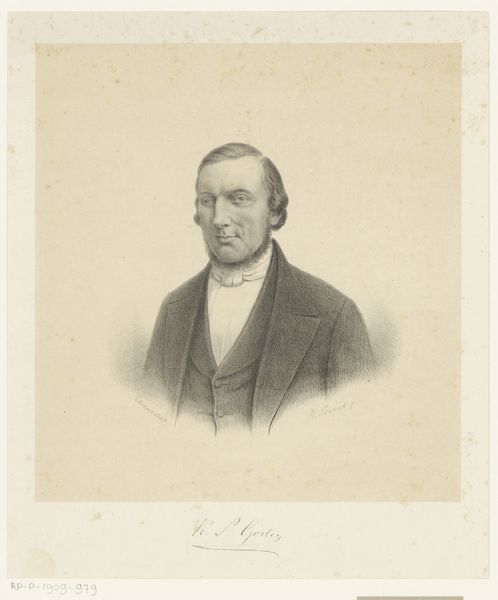
Portret van Gerard Conrad Bernard Suringar Possibly 1854 - 1855
0:00
0:00
Dimensions: height 540 mm, width 420 mm
Copyright: Rijks Museum: Open Domain
This is a lithograph of Gerard Conrad Bernard Suringar by Johann Peter Berghaus, held in the Rijksmuseum. Lithography in the 19th century Netherlands democratized image production, making portraits more accessible. Here, Suringar is depicted in a formal pose, characteristic of the era's emphasis on social standing and professional identity. The image creates meaning through visual codes: his attire, a dark suit and tie, signifies respectability, and his gaze conveys a sense of authority. The Netherlands in this period was undergoing significant social and economic changes, and portraits like this reflected the values of the emerging middle class. Institutional histories are relevant here: the Rijksmuseum itself, founded in 1800, played a role in shaping national identity through the collection and display of art. Suringar was a prominent figure, his image served to reinforce certain social norms. To fully understand this portrait, we can look into archival records, biographies, and studies of Dutch society in the 19th century. By exploring these resources, we can gain a deeper appreciation of the complex interplay between art, society, and the individual.
Comments
No comments
Be the first to comment and join the conversation on the ultimate creative platform.
